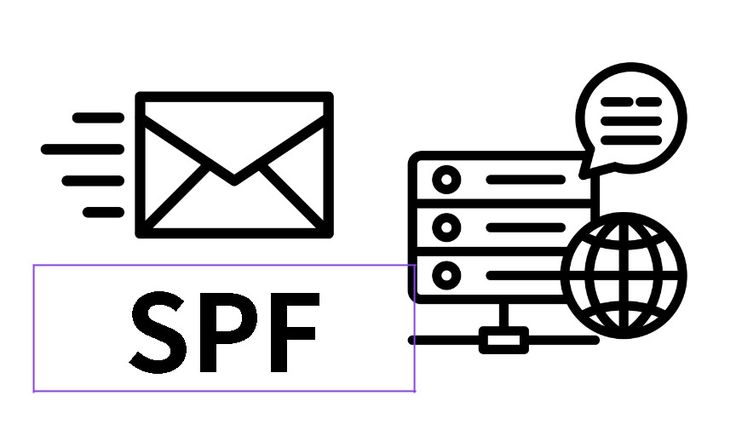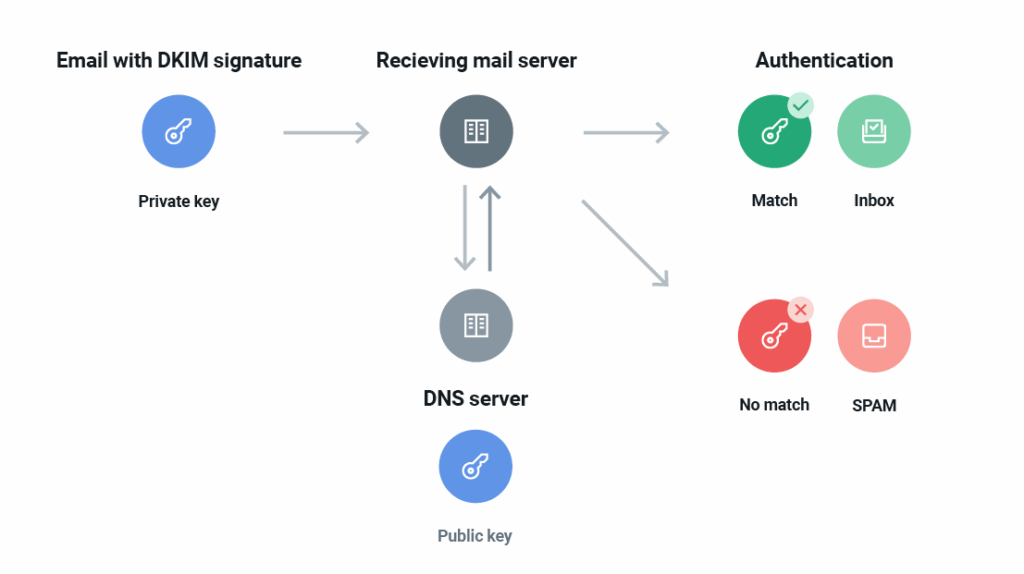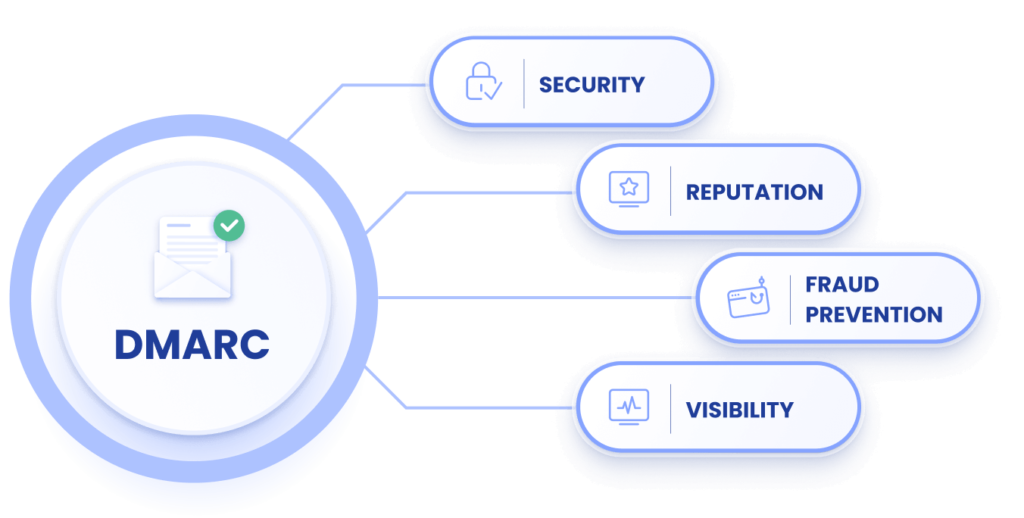Introduction: Why Email Deliverability Matters More Than You Think
You spent hours crafting the perfect email: the subject line pops, the message is sharp, and the CTA is on point. You hit Send, but… nothing.

No response. No clicks. No sign of life.
Then you find out: your email never made it to the inbox. It’s chilling in the spam folder, unseen and ignored.
Welcome to the high-stakes world of email deliverability, where the real battle isn’t just sending emails, but making sure they land where they’re supposed to.
For growing businesses, especially those using email for:
- Sales follow-ups
- Invoice delivery
- Customer support
- Email marketing and newsletters
…good deliverability isn’t optional, it’s revenue-critical. Miss the inbox, and you’re not just losing clicks. You’re losing trust, visibility, and money.
In this guide, we’ll walk you through everything you need to:
- Understand how deliverability works (and what kills it)
- Set up essential technical records (SPF, DKIM, DMARC)
- Build healthy lists that ISPs love
- Monitor and fix issues before they cost you clients
Let’s make sure your next email doesn’t ghost your customers.
What Is Email Deliverability?
Email deliverability is the difference between being seen and being sent straight to digital exile (aka, the spam folder).
It’s not just about whether your email was sent, it’s about whether it:
- Reached the inbox ✅
- Got filtered into spam 🚫
- Was blocked entirely ❌
A high deliverability rate means your emails are landing in the right place: the primary inbox, not promotions, not spam, not the abyss.
What Affects Email Deliverability?
Several behind-the-scenes factors determine whether your email is trusted or trashed:
- Sender reputation: Like a credit score for your domain & IP.
- Email content & structure: Spammy words? Bad HTML? That’s a no-go.
- Authentication records: SPF, DKIM, and DMARC are must-haves.
- Server/IP history: Are you sending from a known spammer’s neighborhood?
- User behavior: If people open, reply, and engage, ISPs give you a gold star.
Essentially, your email is judged on its identity, behavior, and overall impression. If something’s off, filters get suspicious, and that killer offer you sent? Never even seen.
How Spam Filters Actually Work
Spam filters aren’t evil, they’re just picky. Their job? Protect users from scams, spam, and malicious content. And they do it by running every email through a multi-layered screening process before letting it near the inbox.
What Do Spam Filters Look At?
They assign a score based on several criteria. Hit too many red flags? Spam city. Nail the green lights? Inbox glory.
Here’s what filters scan:
- Content: Spammy language (“Free!!!”, “Click now!”), shady links, poor formatting, too many images, etc.
- Authentication: Does your email pass SPF, DKIM, and DMARC checks? If not: 🚩.
- Sender reputation: Are you a trusted sender, or someone who sends to outdated lists and gets lots of complaints?
- Engagement history: Do people usually open, read, and reply to your emails? Or do they delete them without reading?
- Inbox behavior: If other recipients mark your emails as spam, filters learn to do the same across the board.
Each filter (Gmail, Outlook, Yahoo, etc.) has its algorithm, but all of them are trained to smell BS from a mile away.
Essential Technical Setup (The Big Three: SPF, DKIM, DMARC)
If your emails don’t pass these checks, even legit ones can end up looking shady. These three records are the foundation of your email’s reputation, like a passport, fingerprint, and set of instructions for mailbox providers.

✅ 1. SPF (Sender Policy Framework)
What it does:
Tells receiving servers which IP addresses are allowed to send email on behalf of your domain.
Why it matters:
Without SPF, spammers can spoof your domain and ruin your reputation.
How to set it up:
Add a TXT record to your domain’s DNS like:
ini
CopyEdit
v=spf1 include:yourmailprovider.com ~all
Tools like Google Workspace, Zoho Mail, and Mailchimp provide the exact record you need.
2. DKIM (DomainKeys Identified Mail)

What it does:
Sign your email with a digital signature that proves it hasn’t been altered on the way to the recipient.
Why it matters:
Prevents tampering and ensures your email came from you.
How to set it up:
- Enable DKIM in your mail platform (Zoho, Google, etc.)
- They’ll give you a public key to add as a DNS TXT record
- Once active, every outgoing email gets signed automatically
3. DMARC (Domain-based Message Authentication, Reporting & Conformance)

What it does:
Instructs email servers on what to do if an email fails SPF or DKIM and lets you monitor abuse reports.
Why it matters:
Without DMARC, your domain is wide open to spoofing and phishing.
How to set it up:
Start soft with this DMARC record:
ini
CopyEdit
v=DMARC1; p=none; rua=mailto:[email protected]
Then, once you’re confident SPF/DKIM are passing, bump to:
- p=quarantine to send failures to spam
- p=reject to block them outright
Once you set up all three, your domain becomes a verified, trusted sender in the eyes of major email providers.
Infrastructure Tips for Better Deliverability
Getting your SPF, DKIM, and DMARC locked down is just the start. Your email’s ride to the inbox depends a lot on your server setup and sending habits. Here’s how to turbocharge your email infrastructure:
Use Dedicated Sending Domains or Subdomains
Don’t blast marketing emails from your main business domain. Instead, create a separate domain or subdomain just for emails. This protects your main domain’s reputation if things go south.
Example:
- Main domain: yourbusiness.com
- Sending domain: mail.yourbusiness.com or yourbusiness-mail.com
Warm Up New Domains Gradually
Don’t send thousands of emails on day one. ISPs hate sudden spikes. Start small, then slowly ramp up volume over weeks. This builds a solid sender reputation.
Use Reputable SMTP Services
Your server’s IP reputation matters. Use trusted email delivery services like:
- Postmark
- SendGrid
- Mailgun
These platforms specialize in deliverability and keep your emails out of the spam dungeon.
Enable TLS Encryption
Secure your email transport with TLS to keep your messages safe in transit and improve trust with recipient servers.
Best Practices for Clean, Effective Emails
Your email content is your handshake with the recipient, so make it firm, trustworthy, and easy to engage with. Here’s how to keep your emails clean and spam-proof:
Avoid Spammy Trigger Words
Words like “Free!!!”, “Act Now!”, or “100% Guaranteed” scream “spam.” Use clear, honest language that builds trust instead of raising red flags.
Balance Text and Images
Don’t send image-only emails: spam filters hate those. Keep a good text-to-image ratio, so your message comes across loud and clear.
Always Include an Unsubscribe Link
Respect your recipient’s inbox. Include a clear, working unsubscribe link to keep your list happy and compliant with laws like GDPR.
Use Real Domain Links
Avoid shady URL shorteners or random third-party links. Always link from your official domain to build trust and avoid spam suspicion.
Keep Subject Lines Clear and Honest
No clickbait! Your subject should tell exactly what’s inside, so readers aren’t disappointed and mark your emails as spam.
List Hygiene: The Backbone of Email Success
Your email list is gold, treat it well! Regularly clean out inactive or bouncing addresses to keep your reputation solid. Use double opt-in to make sure subscribers want your emails. Always respect unsubscribe requests immediately, no exceptions. And segment your audience to send the right message to the right people, that’s how you boost engagement and stay out of spam folders.
- Regularly clean your list of inactive or bouncing emails
- Use double opt-in to ensure people actually want your emails
- Honor unsubscribes immediately
- Segment your audience for better targeting
Monitoring & Fixing Deliverability Issues
Keep an eye on your email health like a hawk! Use tools like MxToolbox, Google Postmaster Tools, or Mail Tester to check if your domain is blacklisted or your emails are bouncing. Watch your bounce rates and complaints closely: spikes mean trouble. Run inbox placement tests regularly to see where your emails land. Catch issues early, fix fast, and keep your emails landing where they belong: the inbox.
Transactional vs. Marketing Emails: Send Them Separately
Always separate your transactional emails (like receipts, alerts, and invoices) from marketing blasts (newsletters, promos). Use different IPs or even different domains for each. Why? Because if your marketing campaign tanks or gets flagged as spam, your important transactional emails won’t get caught in the crossfire. Keep critical emails safe and your marketing emails free to do their thing!
The Context for Nepalese Businesses
For businesses in Nepal, especially startups and SMEs, email reliability can make or break client relationships. Whether you’re using Google Workspace, Zoho, or cPanel-based email, setting up SPF, DKIM, and DMARC is not optional: it’s foundational.
Nepali businesses also face challenges like a lack of local email infrastructure support or unfamiliarity with DNS-level configurations. This makes it even more important to work with local IT providers or hosting companies who understand these setups and can help optimize email delivery.
Also, consider using regional SMTP relays or platforms that comply with local ISPs’ email guidelines to further improve reliability.
Final Thoughts
Email deliverability isn’t just some technical box to tick off; it’s a crucial part of your business’s revenue engine. Every email that lands in your customer’s inbox is an opportunity: to close a sale, solve a support ticket, build loyalty, or simply stay top of mind. When your emails consistently arrive where they’re supposed to, you’re not just communicating: you’re growing your business and earning trust.
Think of your email system as your digital storefront. You wouldn’t open a shop and leave the door locked or the lights off, right? Investing time and effort into setting up and maintaining proper email deliverability is just as important. It ensures your messages get through, your brand looks professional, and your customers keep coming back.
If your emails don’t arrive, your customers don’t see your offers, updates, or important info, and that means lost opportunities and revenue. So, prioritize your email setup like you would any other critical business tool. With the right practices, tools, and ongoing care, your email will become a powerful channel that drives real results.